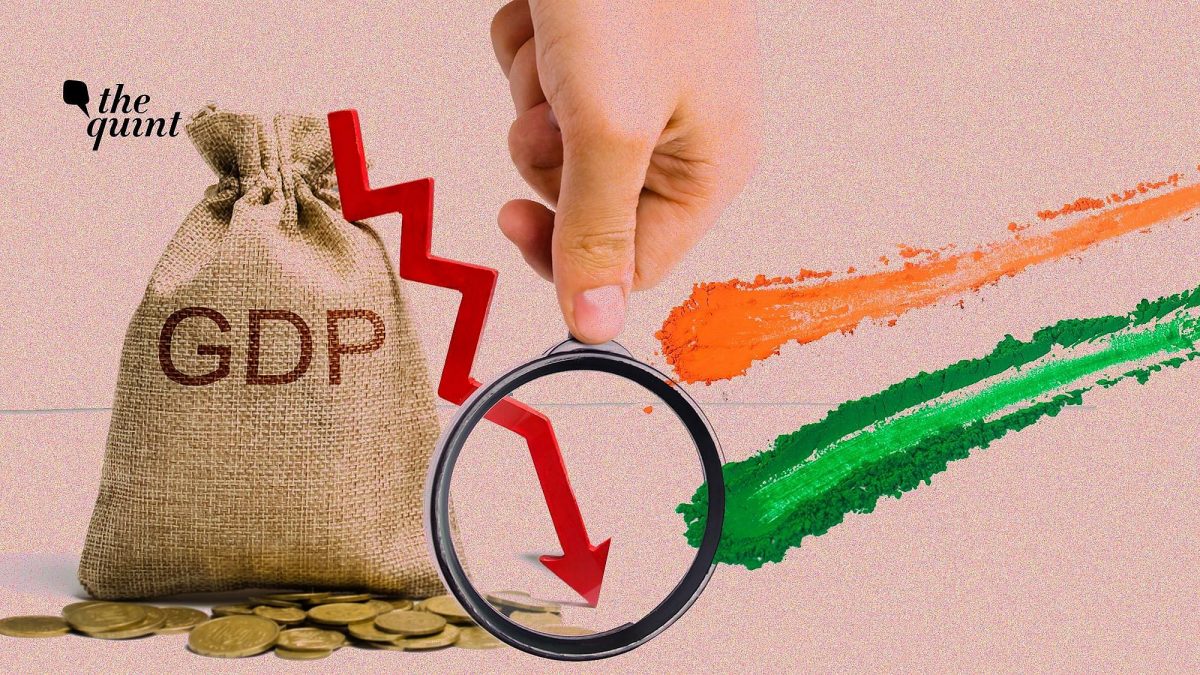
Aunindyo Chakravarty
The aim of all modern nations is to improve the living conditions of its citizens. A large part of that is their economic life, whether they have access to enough goods and services. That is why modern nations find ways to measure the state of the economy at periodic intervals, to see whether it is improving or not. One such measure, that has entered into our everyday lexicon, is the GDP. It is a useful tool that simultaneously measures the level of production of goods and services in an economy, the income generated by it, and also how much was consumed, saved and invested.
GDP is also the underlying measure of growth or ‘vikas’. A high GDP-growth rate makes us feel good, as if we are living in ‘acche din’. Bad GDP numbers have the opposite impact on our sentiments. It is also a battle-ground for political parties.
Oddly, there hasn’t been much politics over the latest data released by the Modi government on Monday, 31 June. This is partly because everyone expected a bad result. It is also because the numbers weren’t as bad as the opposition would have liked.
For starters, India’s GDP in the last fiscal year dropped by 7.3 percent. This was marginally better than the 7.5 percent contraction that a Bloomberg poll of economists had predicted. The same economists expected a small one-percent recovery in the first three months of 2021: The actual GDP growth in the quarter was 1.6 percent. More importantly, Gross Value Added (GVA) was expected to grow in the Jan-March period by 2.6 percent: The government’s data shows it grew by 3.7 percent. The news is not great, but at least it is better than what most economist expected.
The problem is that a year-on-year comparison might not be apt here. Last year we were told that the nationwide lockdown in the last week of March 2020 ended up affecting the GDP figures for the last quarter of 2019-20.
This was borne out by the data for what households consumed in that quarter. Private Final Consumption Expenditure (PFCE), the technical term for such consumption, dropped in the first three months of 2020 as compared to the preceding three months.
Rise in Household Consumption in Early 2021: Illusory Sign of Recovery
In real terms, household consumption stood at Rs 21.73 lakh crore in Q3 of 2019-20, but it dropped to Rs 21.04 lakh crore in Q4, thanks to the lockdown at the end of the quarter.
In Q4 of 2020-21, which is the first three months of this year when most Indians believed we had defeated COVID, households consumption stood at just Rs 21.60 lakh crore.
In other words, the rise in household consumption in the first three months of 2021 is an illusory sign of recovery. In reality, it is still below the level achieved in the last three months of 2019.
This is especially worrying when we compare it to the growth in factory production. GVA in manufacturing has risen smartly by 6.9 percent in Q4 of 2020-21, compared to the previous year. Of course, factories were shut in the last few days of March 2020, so even this jump has to be adjusted for that. But, manufacturing GVA has also grown, compared to the last three months of 2019, by more than 15 percent.
But the fact that household consumption has declined by almost a percent — between Q3 of 2019-20 and Q4 of 2020-21 — while factory output has grown by over 15 percent, tells us a cautionary tale.
It suggests that output is being partly sustained because the government has filled in by increasing its own consumption. This is clearly the case, since Government Final Consumption Expenditure (GFCE) has gone up by over 28 percent compared to Q4 last fiscal.
The second is that factories that produce consumer goods didn’t expand, but those producing machines and equipment did. This is again borne out by the 11 percent increase in Gross Fixed Capital Formation (GFCF). Inventories and stocks have also increased by over 12 percent compared to the same period last year.
This could show up as a problem in coming quarters, especially since the first two months of the first quarter of this fiscal year have been badly hit by the second wave of COVID.
In this scenario, if corporates have over-produced, bought machines and equipment, built-up inventories or even pushed them out through dealership channels, then we could see a sudden drop in manufacturing, instead of continued recovery.
As many, including this author, have argued in the past, the only way out of this is for the government to stimulate consumption by handing over money to people. It is the oxygen that India’s COVID-struck economy desperately needs right now.
Courtesy: The Quint


